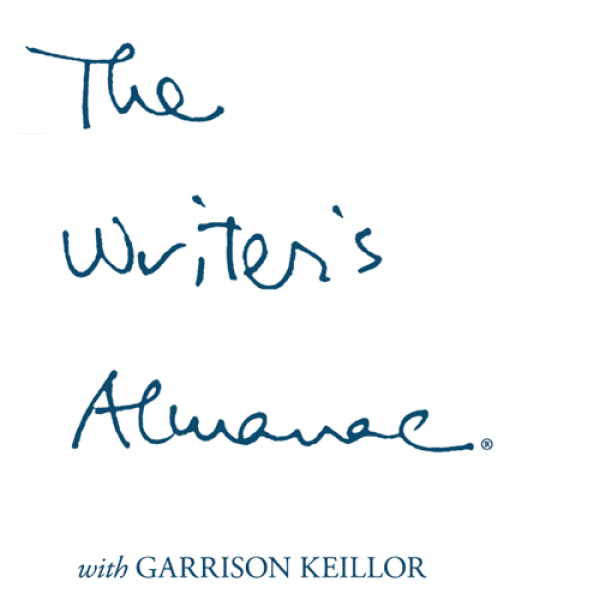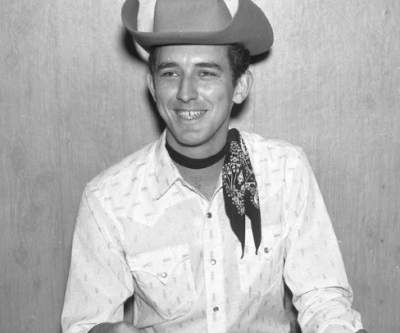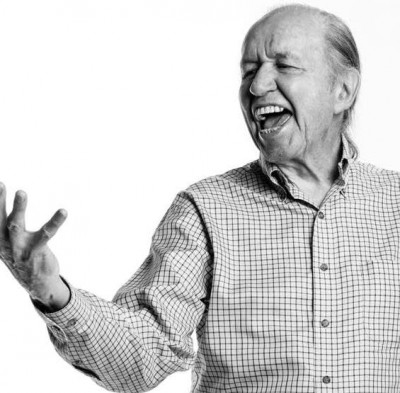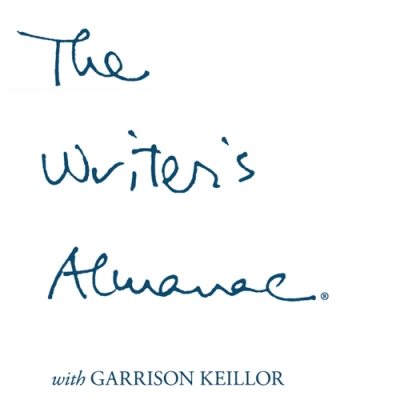December 20, 2018
Tuesday
8:00 p.m.
Minneapolis, MN
Test schedule
A live performance with Robin and Linda Williams at the Cedar Cultural Center
May 20, 2018
Sunday
3:00 p.m.
Lexington, MA
Lexington, MA
A live performance at the Saenger Theatre
April 10, 2018
Tuesday
8:00 p.m.
Tulsa, OK
Tulsa, OK
A live performance at the Brady Theater
March 17, 2018
Saturday
8:00 p.m.
Long Beach, CA
Long Beach, CA
A live performance at the Carpenter Performing Arts Center
March 15, 2018
Thursday
7:00 p.m.
Mobile, AL
Mobile, AL
A live performance at the Saenger Theatre
“Sonnet 65” by William Shakespeare. Public Domain. (buy now)
Since brass, nor stone, nor earth, nor boundless sea,
But sad mortality o’ersways their power,
How with this rage shall beauty hold a plea,
Whose action is no stronger than a flower?
O how shall summer’s honey breath hold out
Against the wrackful siege of batt’ring days,
When rocks impregnable are not so stout,
Nor gates of steel so strong but time decays?
O fearful meditation, where alack,
Shall Time’s best jewel from Time’s chest lie hid?
Or what strong hand can hold his swift foot back,
Or who his spoil of beauty can forbid?
O none, unless this miracle have might,
That in black ink my love may still shine bright.
It was on this day in 1937 Amelia Earhart was last heard from, somewhere over the Pacific. She and her navigator, Fred Noonan, had set off in May from Miami to fly around the world in a Lockheed Electra. She said, “I have a feeling that there is just about one more good flight left in my system, and I hope this trip is it.”
They had completed all but about 7,000 miles of the trip when they landed in New Guinea. Maps of this part of the Pacific were inaccurate, and U.S. Coast Guard ships were in place to help guide them to their next stop, the tiny Howland Island. The weather was cloudy and rainy when they left New Guinea. At 7:42 a.m., Earhart communicated to the Coast Guard Cutter Itasca: “We must be on you, but we cannot see you. Fuel is running low. Been unable to reach you by radio. We are flying at 1,000 feet.” Her last transmission, about an hour later, was “We are running north and south.”
Franklin Roosevelt sent nine ships and 66 aircraft to search for the downed plane, to no avail.
On this day in 1679, Daniel Greysolon, Sieur du Lhut, first reached Lake Superior, about where the city that bears his name — Duluth — now lies. He was a French soldier and explorer, and had visited Montreal on several occasions. In 1675, he bought a house there, and started thinking about making a trip to the headwaters of the Mississippi River. He became friends with the Sioux Indians, and in 1678 he set out with seven French followers and three Indian slaves, intending to broker a peace agreement between the Sioux and the Ojibwe Indians north and west of Lake Superior, and firm up the tribes’ fur trading relationship with New France. He negotiated the peace treaty, arranged some inter-tribal marriages, and encouraged the tribes to hunt together, before moving west to explore the Mississippi and St. Croix rivers.
On this day in 1698, British engineer Thomas Savery patented the first steam engine. He wanted to find a way to pump water out of coal mines, and eventually he built a machine that was filled with water itself. When steam was introduced under pressure, the water level rose and created a vacuum that drew more water up through a valve below. He described it in his book The Miner’s Friend (1702) as “a new invention for raising of water and occasioning motion to all sorts of mill work by the impellent force of fire, which will be of great use and advantage for draining mines, serving towns with water, and for the working of all sorts of mills where they have not the benefit of water nor constant winds.”
Though Savery’s invention worked, his machine was never used in mines due to fears that the boilers would explode. It also wasn’t cost-efficient and used large amounts of fuel to run the boiler, and the soldered joints wouldn’t tolerate much pressure. Savery coined the term “horsepower” in describing how powerful his steam engine was; because mines had previously been drained using horses and buckets, he claimed his machine had the power of 10 horses.
On this day in 1962, the first Walmart store opened for business in Rogers, Arkansas. Founder Sam Walton placed the early stores in rural areas to avoid competition with urban powerhouses K-Mart and Sears, and within five years he had opened 24 stories throughout Arkansas. The first Wal-Mart Supercenter opened in 1988; in addition to the regular Walmart offerings, the Supercenters offered banking, auto shops, fast-food restaurants, hair salons, and portrait studios. Walmart is now the world’s largest corporation, with annual revenues higher than Switzerland’s GDP.
Walton was frugal in his personal life, getting five-dollar haircuts and driving around in an old truck, and he carried that sensibility over to his business model. He hired as few employees as he could, and paid them as little as he could, and fought like a tiger to keep unions out of Walmart. But he presented it as his way of making sure working-class consumers could get goods at a reasonable price, and his workers — called “associates” — went along with it. He also gave his employees a share in the company, and those that took advantage of profit sharing were promised a healthy return. Walton wrote in his autobiography, “If you’ll just stay with me for twenty years, I guarantee you’ll have $100,000 in profit sharing.”
It’s the birthday of Thomas Cranmer, Archbishop of Canterbury, born in Nottinghamshire, England (1489). He helped encourage England’s break from Rome under King Henry VIII, which resulted in the Anglican Church, and he went to work compiling the Book of Common Prayer.
Cranmer is responsible for the wedding vow, “I take thee to my wedded wife, to have and to hold from this day forward, for better, for worse, for richer, for poorer, in sickness, and in health, to love and to cherish, till death us depart.” And also the famous phrases, “What God hath joined together, let no man put asunder,” and, “We therefore commit his body to the ground, earth to earth, ashes to ashes, dust to dust, in sure and certain hope of resurrection to eternal life.”
After the death of King Henry VIII and his successor Edward VI, his daughter Mary by his first marriage became queen. She was Catholic, and she didn’t think much of Thomas Cranmer, who had helped her father divorce her mother. She had him imprisoned for attacking the Catholic Church, and he was eventually burned at the stake. He signed a recantation of his sins against the Catholic Church, but at the last minute he withdrew the recantation. Cranmer stuck his hand into the flames first, because it had betrayed him by signing the recantation. There is now a statue of him in Canterbury Cathedral with a burning hand.
It’s the birthday of Hermann Hesse, (books by this author) born in the town of Calw, in the Black Forest of Germany (1877). He was a bright and difficult young child, and in 1883 his father Johannes wrote: “Humiliating though it would be to us, I am nevertheless seriously wondering if we should not put him into an institution or farm him out to strangers. We are too nervous and too weak for him. … He seems to have a gift for everything.”
But his parents stuck it out. Hesse struggled through various boarding schools and secondary school. He went back home for a while and read books from his grandfather’s library. Then he got a job at a bookshop in a university town in southern Germany, where he spent about four years. He was alone most of the time, writing poems, and later he published a novel, Peter Camenzind (1904), the story of a man’s spiritual and poetic journey, and it did well enough that Hesse was able to write full time.
He got married, had three sons, and settled down in a lake town in the northern Alps. In 1911, he went on a trip to what are now Sri Lanka, Malaysia, and Sumatra. In general, he was disappointed by Southeast Asia, although he still exoticized the people there. He wrote of his experience: “We find the pure, simple, childlike people of paradise. But we ourselves are different; we are alien here and without any rights of citizenship; we lost our paradise long ago, and the new one that we wish to build is not to be found along the equator and on the warm seas of the East. It lies within us and in our own northern future.” He came back, his marriage broke up, and he suffered a nervous breakdown. He moved by himself to a farmhouse in southern Switzerland, and 10 years after his travels in Asia, he went to work on his most famous novel, Siddhartha (1922). By the 1960s, Siddhartha attracted a cult following in America. In 10 years, 15 million copies of Hesse’s works were sold in the United States, books like Steppenwolf (1927), Narcissus and Goldmund (1930), and The Glass Bead Game (1943).
It’s the birthday of theater director and founder of the Shakespeare Festival in Stratford, Ontario, Tyrone Guthrie, born in Tunbridge Wells, England (1900).
After years of staging Shakespeare in London, he wanted to start a repertory theater in America as an alternative experience to Broadway — a theater with a resident acting company. He cemented his ideas along with two colleagues, Oliver Rea and Peter Zeisler, and they put a short ad in The New York Times explaining their idea and asking interested cities to apply to be the host. The seven cities that replied were Cleveland, Chicago, Detroit, Milwaukee, San Francisco, Minneapolis/St. Paul, and Waltham, Massachusetts. And from that list, Guthrie chose Minneapolis/St. Paul and founded the Guthrie Theater there in 1963.
Tyrone Guthrie served as the artistic director of the Guthrie Theater for three years, until 1966, and after that he came back each year to direct a play. He died in 1971 at the age of 70.
He said, “Work can only be universal if it is rooted in a part of its creator which is most privately and particularly himself.”






